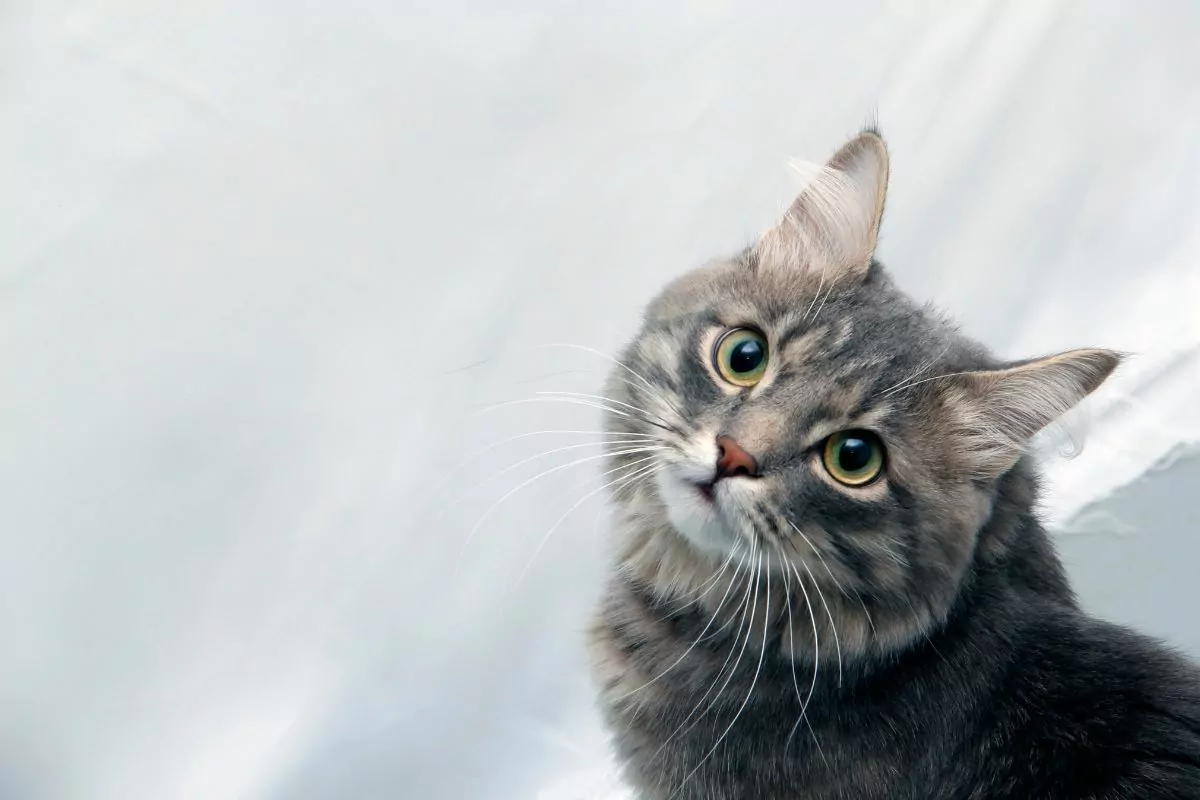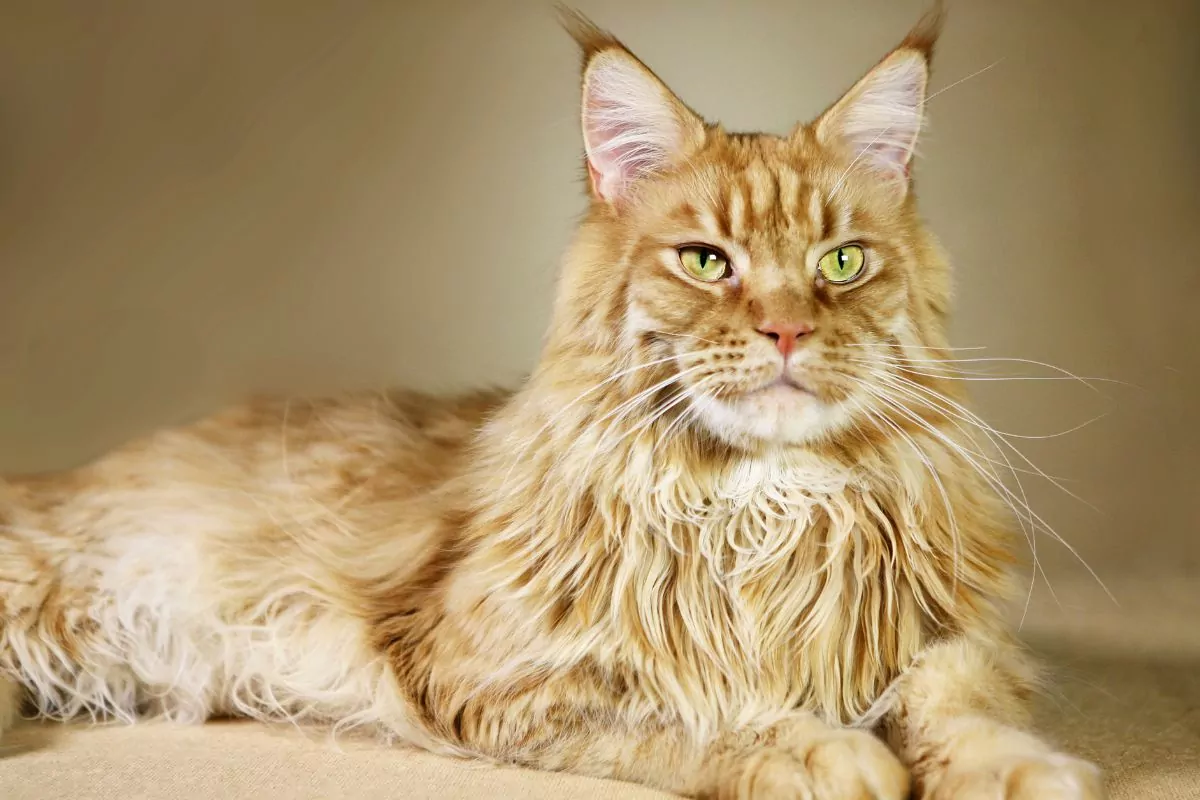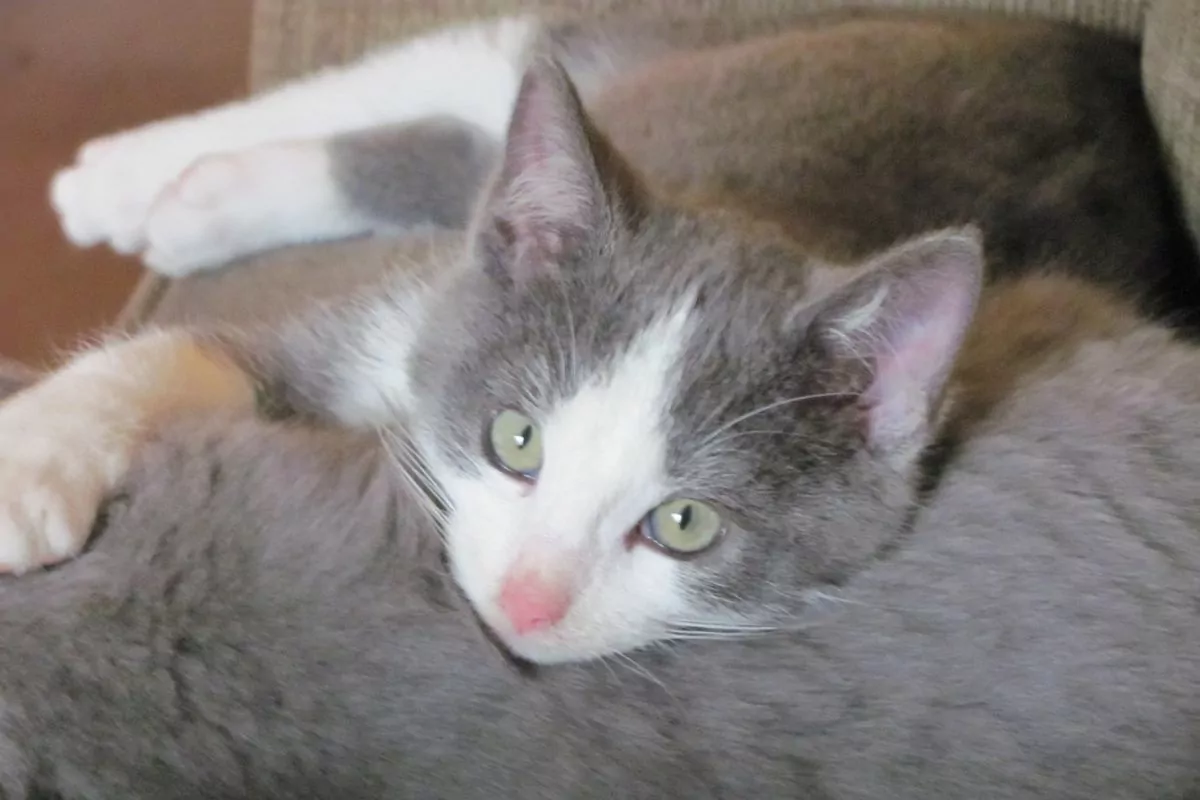What is Feline Hyperesthesia Syndrome?
Is your cat affected by compulsive behavior and demonstrates excessive twitching behavior? Are you asking yourself what is feline hyperesthesia syndrome? Is my cat affected by this syndrome?
Today we will discuss and provide some insight into this syndrome to help you understand why do cats twitch.
Feline hyperesthesia syndrome is also known as rolling skin disease or twitchy cat syndrome. Read our article and find out the 10 Most Common Dog Skin Problems.
Hyperesthesia means increased sensitivity. In this case, an abnormal increase in skin sensitivity.

Is it Deadly?
You may be asking yourselves: Is feline hyperesthesia syndrome deadly, and how detrimental are the consequences of this syndrome to my cat’s wellbeing?
You will be relieved to read that this syndrome is not fatal, though, unfortunately, it is a source of discomfort to your favorite kitty.
It is a neurological disorder that is not entirely understood, and its pathophysiology remains unexplained to a certain extent.
An affected cat may show signs of obsessive licking, tail chasing, rippling of the skin, and hypersensitivity to touch.
Its diagnosis is complicated as it shares many symptoms with other disorders. A thorough examination is detrimental to reaching a definitive diagnosis.
What are the Symptoms?
Feline hyperesthesia syndrome symptoms can be pretty confusing when exhibited by your precious felines. They can vary widely in severity from simply twitching to full-blown seizures and self-mutilation, usually around the tail area.
Affected cats can show skin rippling along the posterior end of their spine. When touching the tail, they may elicit signs of pain. Even petting can demonstrate signs of pain and distress.
Dilated pupils are often commonly observed during an episode. The cats usually stare at their tails and subsequently attack themselves. Tail chasing is also widely seen as biting their paws, tails, and forelegs.
They may stare into space with an unusual expression. They seen are chasing or running away from imaginary threats making them seem as if they are hallucinating.
During these episodes, cats are also seen running around the house frantically and vocalizing while displaying aggression towards their owners or other cats. This behavioral change usually occurs during the morning or late in the evening.
Seizure-like twitching is also commonly seen during these episodes, along with drooling and uncontrolled urination.
Frantic self-grooming is another key symptom of a hyperesthesia cat. This excessive grooming eventually leads to areas of patchy fur.
Feline Hyperesthesia Triggers and Causes
Stress, and, more so, chronic stress is known to be the primary feline hyperesthesia triggers. A stable stress-free environment is vital for cats diagnosed with this syndrome.
Other factors, such as fleas, myositis, seizures, and spinal or neuropathic pain, may also trigger it.
It is also a compulsive behavioral disorder, and the exact cause of hyperesthesia in cats is often unknown.
Another triggering factor can be diseases that cause dermatological problems and provoke itchiness/scratching. Allergies are the number one culprit.
Frequently when the hypersensitive area is touched or petted, the cat will react suddenly. The cats’ response can vary from slightly scratching themselves to becoming more aggressive and even trying to bite.
Determining the exact trigger for your cat can be difficult and exhausting. In your logbook, you can note when and what triggered the episodes helping you understand what caused the episode.
Slowly by slowly, a pattern will develop and will be very helpful in controlling this compulsive behavior. It will also help you to learn what type of petting your cat tolerates and is pleasant.

How to Treat FHS
Feline hyperesthesia treatment focuses on alleviating discomfort, with its main goal of providing a good quality of life for the cat. During an episode, the feline should not have seizures, become aggressive, self-mutilate, or suffer from incontinence.
The treatment process often requires a trial and error until you and your veterinarian can develop a suitable plan for the individual cat.
Medication may or may not be needed depending on the severity of the condition. For example, a cat might respond to certain types of petting with compulsive grooming. In this instance, avoiding touching the cat in particular trigger areas should be enough to control its compulsive behavior.
If the cat demonstrates triggering episodes on its own through grooming, then it is best to help with behavioral modifying medication.
Supplements such as omega-3 fatty acids help decrease skin sensitivity, combined with corticosteroids to decrease any apparent skin inflammation. These medications combined will help alleviate itchiness and decrease the need for the cat to scratch itself.
Medications such as phenobarbital or gabapentin can help control neuropathic pain and seizures in more complex cases where seizures are involved. Bear in mind these drugs can take up to several weeks to start working effectively, so be patient when starting this therapy.
In the case of compulsive grooming, the veterinarian will prescribe behavioral drugs such as fluoxetine and clomipramine. You can employ toys during an episode to distract the cat from a compulsive grooming episode.
The veterinarian must rule out any sources of pain. During the examination, the veterinarian will look for old injuries, especially around the tail area, where self-mutilation occurs most commonly. Old tail fractures or broken hip bones cause painful nerve spasms, triggering self-mutilation behavior and aggressiveness towards the cat’s tail.
It is important to administer flea treatment consistently, even if no fleas are apparent. An ointment like Bravecto helps protect the cat from displaying compulsive grooming behavior and lowers the risk of the cat getting fleas, thus triggering an itching episode.
Lastly, offering the cat a stable environment is very important. Feeding schedules are a great way to maintain a consistent feeding time.
Plenty of toys should be available to maintain an enriched environment. If other cats are present in your household, you must also minimize competition for a safe place or the litter box. A cat that feels safe in its environment will have less behavioral self-conflict.
Are any Breeds Predisposed to the Condition?
Feline hyperesthesia syndrome usually affects young kitties aged one to five years and most commonly Oriental breeds such as Burmese, Siamese, Abyssinian, or Persian. However, any breed of cat can be involved.
It can affect male or female cats equally. Gender is not known to be a predisposing factor.
How Do Vets Diagnose FHS?
Diagnosing feline hyperesthesia syndrome is a process of elimination, as many conditions cause similar symptoms.
These include dermatological problems such as allergies, brain, and spinal trauma, poisoning, and hyperthyroidism.
The veterinarian in charge of the cat will perform a thorough physical exam and record a detailed behavioral history. Your log book will also be beneficial as it will help identify the symptoms and behavioral changes.
A complete blood count, a chemistry profile, and a thyroid hormone level check are required.
X-rays are a handy diagnostic tool for determining if any old or new fractures are present.
Skin tests will help rule out dermatological conditions such as allergic flea dermatitis.
In the case of a cat seizuring and displaying other neurological symptoms, your veterinarian may refer you to a specialist/neurologist.
Below we have provided you with a comprehensive list of what differentials exist regarding twitchy cat syndrome:
- Flea allergy dermatitis and mite infections
- Fungal skin infections
- Epilepsy – feline hyperesthesia syndrome and epilepsy have a close association
- Degenerative joint diseases such as arthritis that can cause pain in joints
- Pinched nerve, or a slipped disc causing spinal pain
- Nutritional deficiency
- Hyperthyroidism
- Toxin exposure/poisoning
- Pain associated with abscesses, bite wounds or blocked anal sacks
- Neurological issues such as brain tumors, head trauma, or even infection of the brain
It is always a good idea to take a video of your cat when it is having an episode. This way, your veterinarian will have a clearer picture of your cat’s behavioral changes.
FAQs on Feline Hyperesthesia Syndrome
Can a Cat survive Feline Hyperesthesia Syndrome?
Yes, a cat can survive feline hyperesthesia syndrome and lead a happy, quality life.
However, bear in mind that cats respond differently to a treatment. It is a long process of elimination and figuring out what works for each cat individually. Some cats respond faster to treatment than others. Patience and close communication with your veterinarian is imperative for a successful treatment plan.
Self-mutilation can be controlled and even stopped wholly given the necessary steps taken, and stress is minimal in their everyday life. Behavioral modifying medications play a vital role in these cases.
So if you have been given this diagnosis for your kittie, don’t despair it is manageable and certainly does not mean they cannot live a long, happy life. Winning most of the battle is having a diagnosis; if managed properly, it shall remain a mild condition.
Is FHS Genetic?
As mentioned above, a genetic predisposition exists in certain breeds of cats. Most commonly, Siamese cats seem genetically predisposed, and thus it is advisable that owners should not breed cats showing this syndrome.
Feline hyperesthesia syndrome is a complicated and multifactoral behavioral/neurological disorder.
At What Age Does Feline Hyperesthesia Syndrome Happen?
It is usually seen in cats after they have reached maturity, commonly between the ages of one and five.

Final Thoughts
Understandingly so, feline hyperesthesia syndrome can be a scary diagnosis. Not to mention how terrifying it is to watch an uncontrollably twitching cat running around the house with strange behavior.
However, while feline hyperesthesia is a very strange and stress-causing for the owner syndrome, there are many ways for you to make your cat feel comfortable again.
There are an array of treatments available tailored to your cats’ needs. Your veterinarian will be more than happy to discuss available options and support you and your furry friend at this difficult time.
There is no reason why through effective management, your beloved cat will not lead a pain-free and happy life. Yes, it may be challenging and will require patience, but it will all pay off in the end, having your purrfect friend curl up to you, happy and stress-free.
